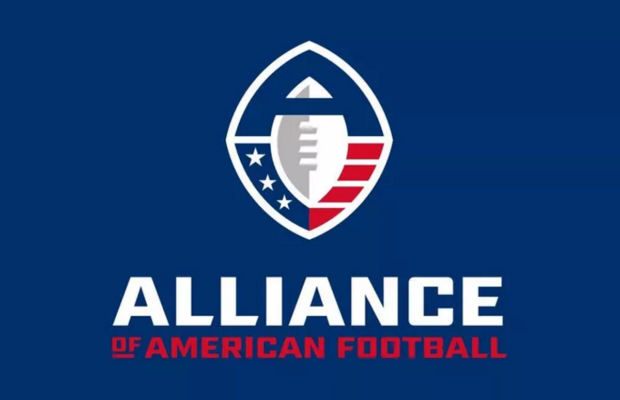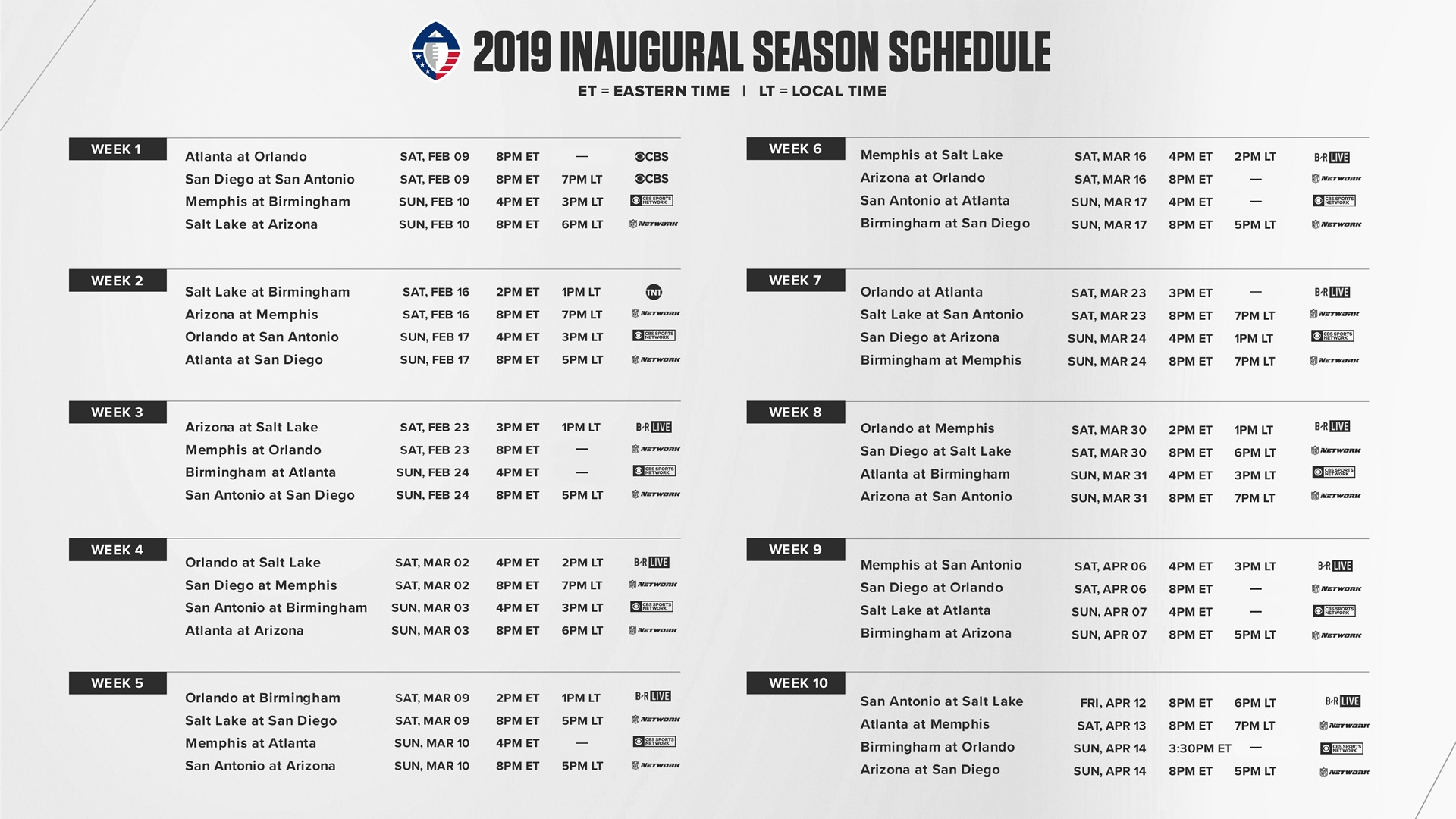AAF: New pro football league, the Alliance of American Football, debuts Saturday

Traditional competitive football in the U.S. could have been done until July, when college football media days and NFL training camps once again popped into the public eye. But the eight-team Alliance of American Football, which opens with two games on Saturday night (San Diego at San Antonio and Atlanta at Orlando), marks the debut of the upstart league on CBS.
It’s not quite the NFL, and it’s not quite college football, either. This developmental league that is trying to be a ‘compliment’ to the NFL season.
With a 10-game regular-season schedule, the inaugural campaign will culminate in an April 27 championship game.
Where to watch
A combination of places: online, on broadcast networks, on cable and potentially on your phone. CBS will broadcast the two opening-night games (most of the country will see San Diego at San Antonio while some will get Atlanta at Orlando) and CBS Sports Network will televise one game a week.
NFL Network will show 19 games — starting with Salt Lake at Arizona in Week 1 and then two games per week following. TNT will have Salt Lake at Birmingham in Week 2 and then B-R Live will stream one game per week over the final eight weeks of the season.
The talent level?
The thought is that this could be comparable to what would happen if backups on NFL teams played against each other. Multiple players, coaches and Polian himself said they believe their starters could be competitive with the “twos” in the league.
“What I want the fans to say is that it’s real professional football,” Polian said.
Who are these guys?
There will be a few familiar faces, specifically at quarterback, with Christian Hackenberg, Matt Simms and Aaron Murray. Running backs with NFL experience are Trent Richardson, Matt Asiata, Bishop Sankey and Denard Robinson. Defensive players looking to get back to the NFL are Scooby Wright and Sterling Moore.
The majority of recognizable names are the head coaches: Dennis Erickson (Salt Lake), Steve Spurrier (Orlando), Mike Martz (San Diego), Mike Singletary (Memphis) and Mike Riley (San Antonio).
Rule changes
There are several MAJOR changes that include play clock reduction and a limited pass rush. Read more in depth here.
So, I hear this will be more interactive.
There will be fantasy games to play through the app. You can’t gamble through the app, but MGM is the “gaming partner” of the AAF — and the thought is there will be a plethora of options both on the app and through the gaming partner to make the game more interactive. Charlie Ebersol, the other co-founder, explained the league has been building technology to give real-time data from hardware they’ve developed that will allow for actual real-time updates and gaming possibilities.
“In regular fantasy, you’re the team owner. In daily fantasy, you are the general manager. We believe in the game we have, you’re the coach,” Ebersol said. “So think of it like, instead of a fantasy manager, you’re a fantasy coach. So you’re going play to play, and you’re looking at the predictability of what play is going to happen and which players are going to be involved and what the odds of those plays happening are. That’s more of what our game is.”
That data, Ebersol hopes, also will give more of an objective view of how players are performing. Every player and every ball used in a game will have microchips embedded to accumulate and transmit data.
How do I go to these games?
The league exists in eight cities in the South, Southwest and West Coast — mostly with cities that could make sense for NFL franchises (Birmingham, San Antonio, Salt Lake City, Orlando, Memphis, San Diego) as well as two existing NFL locales (Atlanta and Arizona). Ticket packages are $75 for five home games. For the most part, games are being played in college stadiums.
Quarterback were drafted, but where are the rest of the players coming from?
Three ways.
- The league figured out the top 30 NFL-producing colleges over the past 10 seasons (USC is No. 1), and gave each team three high-producing schools. Then they gave teams up to 30 other area schools in a certain range to pull allocations from.
- If a player doesn’t fit that grouping, they also assigned four NFL teams to each AAF team; if a player played for a team or was in training camp with a team, then his rights were given to the respective AAF team. This was done with both geographic and population data (for instance, San Antonio has the Cowboys, Texans, Chiefs and Eagles).
- There is also at least one CFL team assigned to each team. If a player hits none of these lists, then there was a first-come, first-served rights list of 25 players. If multiple teams put in a request for the same player, they went by their waiver list.
“We may tweak it depending on what we see, but the concept is good,” Polian said. “We know the concept is good, because it’s working.”
Are these guys making any money?
Not much is known here.
The league didn’t give out much in terms of financial deals, but the players all signed three-year, $250,000 contracts. Every player is on the same deal. If they finish a year in the league, they’ll also get a stipend for secondary education. There’s also an internship program.
Contracts also have bonuses tied into them depending on hitting both on- and off-field incentives.
What’s the long-term goals for The Alliance?
Polian and Ebersol want to work to be a complement to the NFL, and Polian said he’s open to suggestions from the league. As for what they are hoping for by the end of this season?
Per Polian, “I want folks who know football to say, ‘Hey, this is pretty good football and it’ll get better and it got better during the year.'”
“We’re going to be a lot better on the 27th of April than we’ll be on the 9th of February. Teams get better as they practice and play together. That’s No. 1.”
“No. 2, I want people to say that it’s an interesting and exciting game.”
